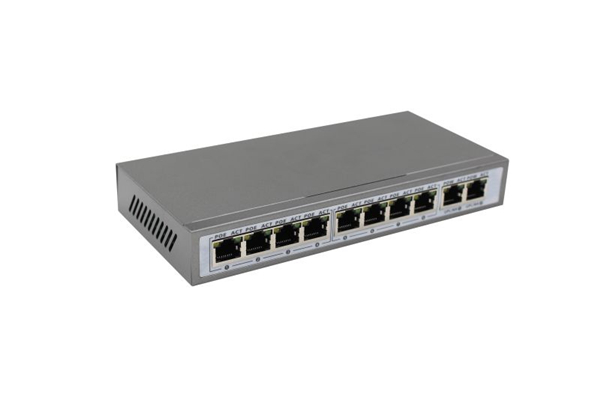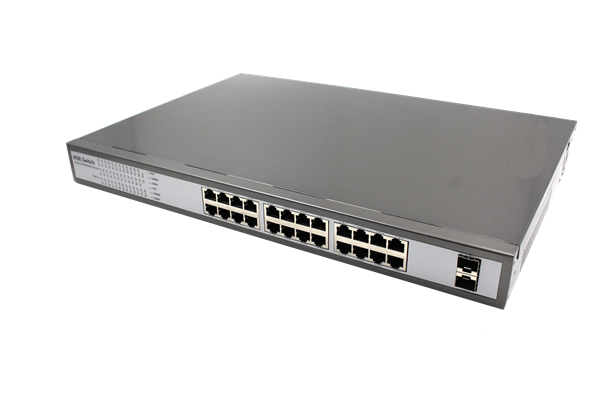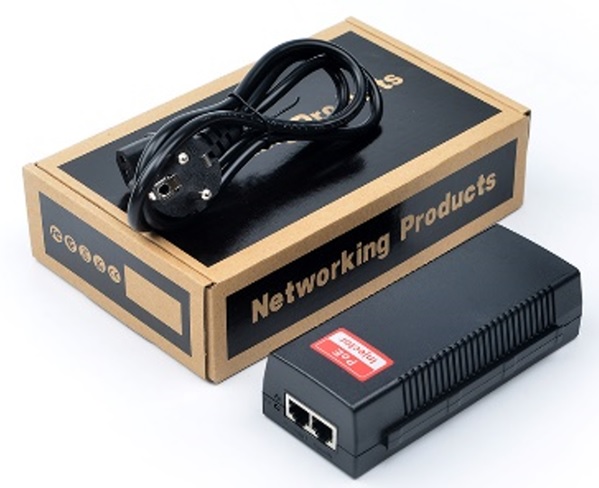What are the advantages of TB-VIEW PoE power supply solutions?Current location: Home > What are the advantages of TB-VIEW PoE power supply solutions?
- What are the advantages of TB-VIEW PoE power supply solutions?
1. Simplify wiring and save labor costs
A network cable transmits data and power supply at the same time, PoE eliminates the need for expensive power supplies and time spent installing power supplies, saving costs and time.
2. Safe and convenient
The PoE power supply terminal device will only supply power to the device that needs power supply. Only when the device that needs power supply is connected, the Ethernet cable will have voltage, thus eliminating the risk of leakage on the line. Users can safely mix original equipment and PoE equipment on the network, and these equipment can coexist with existing Ethernet cables.
3. Easy to remote management
Like data transmission, PoE can supervise and control the device by using Simple Network Management Protocol (SNMP). This function can provide functions such as shutdown at night and remote restart.
Question: What are the risks or disadvantages of PoE power supply technology in engineering applications?
1. Insufficient power, the receiving end can not move: 802.3af standard (PoE) output power is less than 15.4W, which is sufficient for general IPC, but for high-power front-end equipment such as dome cameras, the output power cannot reach To the request.
2. Risk is too concentrated: Generally speaking, a PoE switch will supply power to multiple front-end IPCs at the same time. Any failure of the POE power supply module of the switch will cause all cameras to fail to work, and the risk is too concentrated.
3. High equipment and maintenance costs: Compared with other power supply methods, PoE power supply technology will increase the workload of after-sales maintenance. In the sense of safety and stability, independent power supply has the best stability and safety.
Question: The safe transmission distance of PoE power supply? What are the suggestions for the choice of network cable?
The safe transmission distance of POE power supply is 100 meters, and it is recommended to use Cat 5e copper network cable.
It is possible to transmit DC power with a standard Ethernet cable for a long distance, so why is the transmission distance limited to 100 meters?
The fact is that the maximum transmission distance of a PoE switch mainly depends on the data transmission distance. When the transmission distance exceeds 100 meters, data delay and packet loss may occur. Therefore, the transmission distance should not exceed 100 meters in the actual construction process.
However, there are already some PoE switches that can reach a transmission distance of 250 meters, which is sufficient for long-distance power supply. It is also believed that with the development of PoE power supply technology in the near future, the transmission distance will be extended farther. PoE power supply technology has high requirements for wires. It is recommended that in monitoring projects, you should never save costs on wires. The gains outweigh the losses.
Question: Should I buy a non-standard or a standard PoE switch?
Whether it is non-standard or standard, it mainly depends on whether the AP and IP Camera to be powered support 48V, 24V or 12V input? If it is 48V, it is written to support IEEE802.3 AT or AF power supply standards, which are generally standard. If it is a 24V and 12V power receiving device, you need to find the corresponding 12/24V non-standard power supply switch, or you can buy a standard one. At this time, you need to buy a PD power splitter to convert PoE into DC power supply and network cable data .
Then why it is recommended that everyone buy the standard, because there are many hidden dangers!
The working principle of the non-standard PoE power supply switch is that it belongs to the switching power supply category. There is no PoE chip. It only uses a transformer to step down the 220V AC into 48V DC. It does not detect the lower-end power receiving equipment, and directly outputs the voltage and current on each RJ45 port without interruption. , May cause the voltage to be too high and burn out the lower-end power receiving equipment. Such a device cannot be directly connected to other network devices, because the direct connection easily causes the two pairs of the network cable in the PoE power supply to form a short circuit. The port is damaged, and the smoke and fire are likely to cause accidents. .
In summary, the standard PoE power supply switch has a PoE control chip inside, which has a detection function before power supply. When the device is connected, the PoE power supply will send a signal to the network to detect whether the terminal in the network supports PoE power supply PD device. The non-standard PoE product is a power supply device with a strong network cable. It is powered as soon as the power is turned on. There is no detection step. It is powered regardless of whether the terminal is a PoE powered device, and it is easy to burn the access device.
Question: How to distinguish between standard PoE and non-standard PoE?
1. Look at the specifications, if the output is 12-24V, it must be non-standard.
For example, a certain treasure 8-port 6-port POE power supply switch; but according to the specifications, 15V1A output, 19V1A ultra-long-distance output. Because the IEEE802.3 AT/AF protocol stipulates that the standard PoE port output voltage range is between 44-57V, so this one knows that it is non-standard at a glance. It is not surprising that it is so cheap, because the manufacturer also saves PoE chips in order to save costs. Lost. But if the port outputs 48V, it must be a standard PoE switch? Not necessarily, we have to use the second trick.
2. Use a multimeter to check the corresponding line sequence of the port or network cable, and test whether the output voltage is always on the lower network cable.
Start the device, adjust the multimeter to the voltage measurement position, touch the power supply pins of the PSE device with the two meter pens of the multimeter (usually 1/2, 3/6 or 4/5, 7/8 of the RJ45 port) ), if a device with a stable output of 48V or other voltage values (12V, 24V, etc.) is measured, it is a non-standard product. Because in this process, PSE does not detect the power receiving device (here, a multimeter), and directly uses 48V or other voltage values to supply power.
On the contrary, if the voltage cannot be measured and the needle of the multimeter jumps between 2~10V, it is a standard POE. Because at this stage, the PSE is testing the PD end (here, the multimeter), and the multimeter is not a legal PD, the PSE will not supply power and no stable voltage is generated.
If it is a standard PoE power supply device, it will send a very small voltage when supplying power to the device below, first check whether there is a corresponding power receiving device connected below; then provide it according to the power required by the device below The corresponding voltage and current. Although the PoE power switch in Figure 2 below is written as 48V output, it is the same as other non-standard PoE switches, in fact it belongs to the switching power supply category and has no PoE chip.
Engineering business friends who have done monitoring and wireless engineering know that the reliability of engineering products is very important; the reliability is low, and the reliability of the entire system is lower, which not only affects the company’s business development, but also adds a huge system to the engineering company Maintenance costs, and some even cannot be accepted, causing serious losses.
Question: So as long as it is a standard PoE power supply switch, the reliability must be high and stable?
The reliability of equipment is closely related to the environment of use. Commercial switches are generally used indoors, and industrial switches are generally used outdoors, and their reliability requirements are different. Here we temporarily take commercial switches as an example. The reliability of a commercial POE switch is mainly composed of two parts, one is the switching part, mainly composed of (PCB, switch chip + PoE chip, other electronic materials), and the other is a built-in and external power supply for POE. Because the power supply is responsible for the entire power supply, its reliability is the most important.




